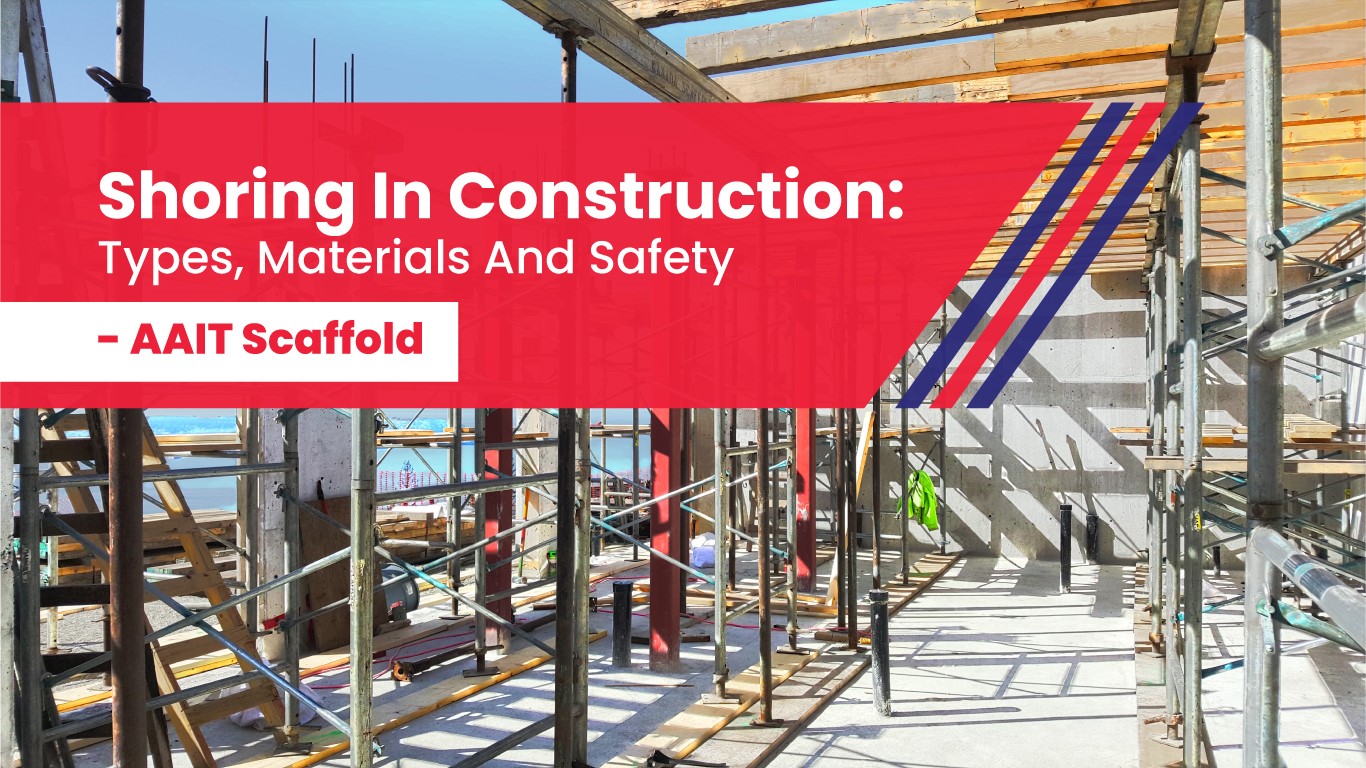
When teams execute certain construction projects, they opt for shoring. This offers the required support for the scaffold to stay in place. But, if you’re still wondering how shoring is used in construction, then read ahead. In this article, we shall cover more about the types of shoring in construction.
What is Shoring in Construction?
Whenever you come across the term, ‘shoring’, it means offering extra support to a structure. This structure can either be steel reinforcement or a scaffold. In case there’s no sufficient support, then the structure will collapse. This may occur due to loose soil and water infiltration. Way ahead, shoring has the capability of supporting heavy loads besides offering stability.
Common Construction Shoring Solutions
There are many shoring systems available in the construction sector. But, when individuals commence work, the type will depend on the requirements and the project needs. So, let’s quickly go through the most common shoring solutions.
Heavy Timber Shoring
Under this shoring, teams use timber beams to create a supportive framework. These are used for shallow excavations and medium-duty applications. While these are simple to use, they are flexible in the design.
Steel Beam Shoring
Such a shoring involves the use of steel beams to offer temporary support. The stable framework is formed by setting up vertical posts that hold the horizontal beams in place. As these offer high strength, they are ideal for deep excavations as well.
Soldier Beam Systems
When individuals set up soldier beam systems, they use horizontal beams and soldier piles. Such components are then placed at close intervals for forming a wall. This wall then stretches continuously across the area.
Types of Construction Shoring Domain
Now, let’s check out the types of shoring used for diverse purposes.
Cantilever Shoring
While installing cantilever shoring, the individuals use I-beams. This shoring is used when there’s a need for additional strength. You will observe this shoring during the construction of bridges.
Deadman Shoring
When it’s required to sustain an enormous load, people prefer deadman shoring. In addition to scaffolding systems, the shoring is used for soil retention. Most of the time, this shoring is also used when there’s less space.
Strut Shoring
While setting up this support system, workers use struts. These serve as a foundation and offer some more structural support. The shoring may also be used for keeping basement excavations in place.
Why is Construction Shoring important?
There are many reasons why people consider shoring in construction. Here are some of the reasons.
- As shoring is an essential part, it offers the required support to a scaffold. This eventually ensures safety when workers commence with the tasks.
- While these stabilize the sloping surfaces, they can also be used for excavations.
- Shoring prevents the walls from collapsing suddenly. Hence, it ensures protection for workers from unexpected accidents.
- If shoring is used properly, then it can maintain structural integrity. It can further prevent damages in the future due to certain climatic conditions.
- Ultimately, the support system ensures safety for the building.
What are the Different Types of Construction Shoring Materials?
In the construction sector, three different types of materials are used for shoring. These include aluminum, steel, and timber.
Timber Shoring
Cost-effectiveness is one of the pros of using timber shoring. But, this shoring is likely to decay when it’s in contact with the atmosphere.
Steel Shoring
Owing to its characteristics, like high strength, this shoring is quite expensive. Besides, in the case of a humid environment, this shoring doesn’t decay. The strength-to-weight ratio is also high for such a shoring.
Aluminum Shoring
An aluminum shoring is always the lightest type of shoring. But, people have to maintain the shoring regularly as it’s prone to corrosion.
How to Install and Dismantle Construction Shoring Systems?
Setting up and dismantling a shoring system is pretty straightforward. Here are the steps to follow.
- As you commence with the installation, you have to use a hydraulic lift to support the beams.
- Later, you have to use a torque wrench to make the nuts tight. In those instances, you don’t have to use any tools.
- When it’s time to dismantle the shoring, you have to make the bolts loose.
- A bit later, you need to unmount the jacks from every beam.
So, only with the help of an experienced person supervising all shoring applications, this can be set up easily.
Regulations and Standards for Shoring in Construction
To ensure the structure’s safety, you have to comply with some regulations. These include those under The International Building Code. Regulations under OSHA also have to be taken into account.
The International Building Code (IBC)
The IBC covers a few standards that are stated by the International Code Council. These present the requirements in detail regarding shoring designs. Workers can also get a clear idea about how the shoring has to be maintained. Some of the standards are also pertaining to load testing. For instance, if a group of engineers has to carry out some tests, then they can refer to the standards.
Construction Shoring Regulations
With time, the OSHA has laid down some guidelines for the safe use of shoring. These state the duration for which workers can stay safe during diverse projects. With the help of the ladder, workers can also access areas at different levels. Above all, guardrails have to be set at more than 4 feet. This will prevent objects from falling while the work is in progress. Exit routes will also be offered in case the workers have to leave the area quickly.
Conclusion
Finally, shoring has always been established for construction projects. Apart from supporting the structure’s weight, shoring creates a strong foundation. But many factors have to be considered before choosing shoring. Firstly, the individuals have to know more about the load-bearing capacity. They also have to evaluate the structure’s weight. This, in turn, will ensure safety for the project.
Are you planning to set up a scaffold? Well, in that case, you can connect with AAIT Scaffolds that offer scaffolding parts in USA.












 Download
Download
Comments are closed